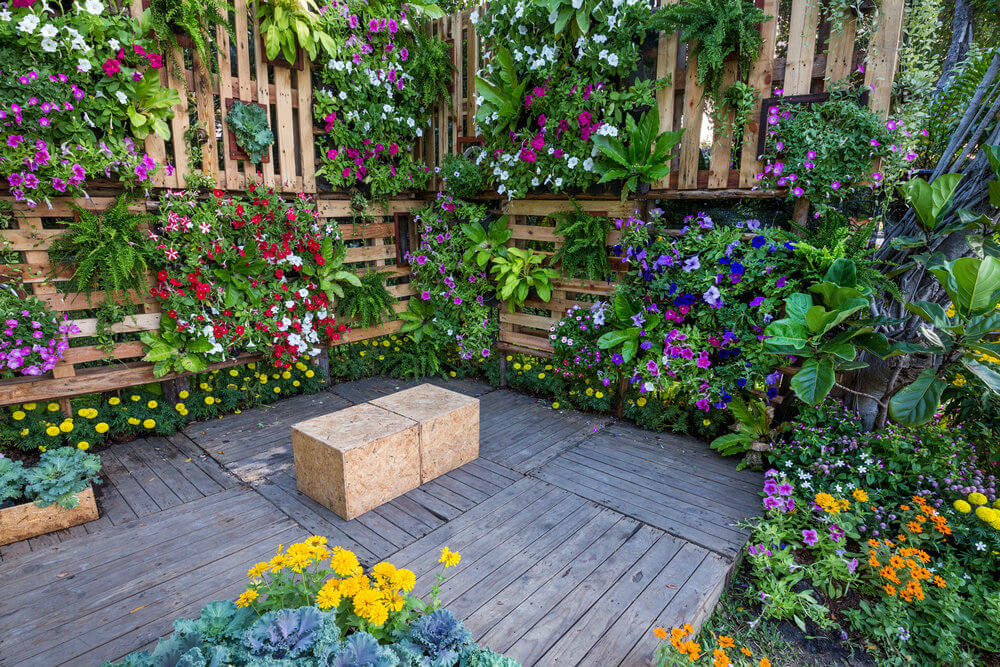People of today cannot enjoy living surrounded by any conventional garden. New real-estate and buildings are designed with a built-in vertical garden to save space. Plants and other greenery use carbon dioxide and water to make solar energized foods. In the process, plants produce oxygen required for the respiration of all. Plants also remove pollutants from the air and reduce the heat.
Vertical gardens are grown upwards using trellis, fences and other supporting systems. These vertical gardens commonly created on the fencing will add privacy to home and front/back yard. The main structure of the vertical garden is a three-layered framework. The wall should be covered with ceramic tiles for easy maintenance. A plastic framework is fitted with studs such that there is a cavity left behind for cleansing. The irrigation pipeline should produce lateral running water for drip irrigation. The pipe should be inserted from the rear side over the basic framework that holds rows of plastic pots and plastic frames.
Another method of Vertical gardening is the use of DIY kits. These comprise of small containers arranged in neat rows facing vertical support. Typically, these containers are filled with soil and fertilizers ready for the seeds. After placing the seeds, carefully water them till they germinate into small saplings. One can add a series of rows to cover the vertical surface of the wall. The main objective of vertical gardening is that plants should grow vertically and not outwardly. People have to use scaffolding, shelving system and other methods. One has to create flat surfaces at various intervals along the vertical axis to grow plants in pots. Here, we have discussed step-by-step methods of how to set up a vertical garden within your premises.
{ 1 } Choose a Wall For Your Vertical Garden
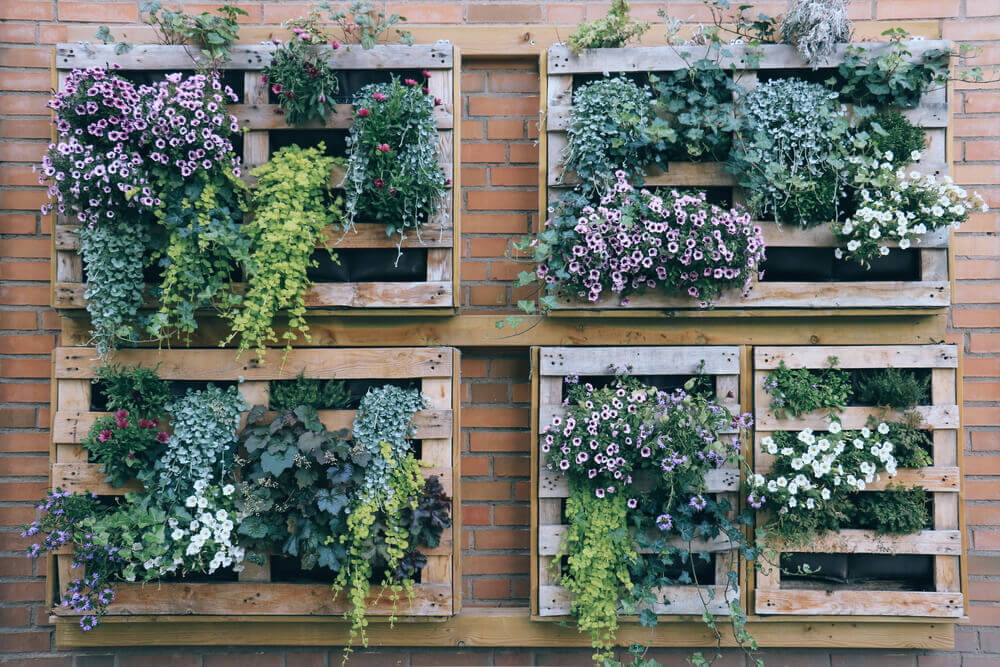
Vertical Green Wall With Planting Crates By Lulu and Isabelle/Shutterstock
First and foremost, vertical gardeners have to select the most appropriate wall for creating a vertical garden. This could be the wall of the fence, vertical wall of one’s home including the wall in the living room. Interested in flowering plants means one has to ensure the vertical garden gets morning sunshine for many hours.
Make four sets of eight crates using four stacked crates divided into two segments. Place two of these sets one on top of the other. Leave some space and again place two of the sets one on top of the other. Use these crates to hold trays or pots of plants in soil and fertilizer. On the top crates, plant flowering plants that require maximum sunshine for most of the day. Below, plant leafy ones such as the common English Ivy and other green foliage. In the lower crate, plant mostly leafy plants and add some flowering ones too. One can plant climbers, flowering plants and decorative plants. One has to keep in mind to maintain the symmetry to make it pleasing to the eyes.
{ 2 } Waterproof Your Wall
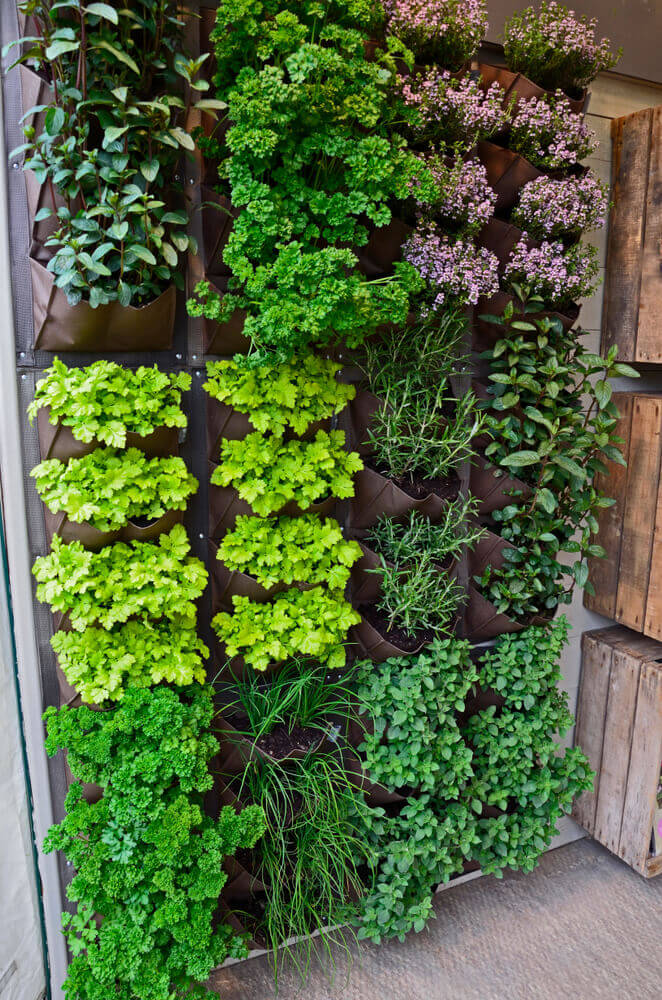
Waterproof Pockets For Vertical Herb Garden Wall By Del Boy/Shutterstock
You do not wish to damage the vertical wall due to dampness and cause mold. Hence, ensure you use plant holders made of “water-proof” material and arranged tilted. Several vertical rows of these water-proof pockets hang adjacent to each other maintaining small space. These water-proof containers are held by similar water-proof material too.
{ 3 } Consider Sun And Shade
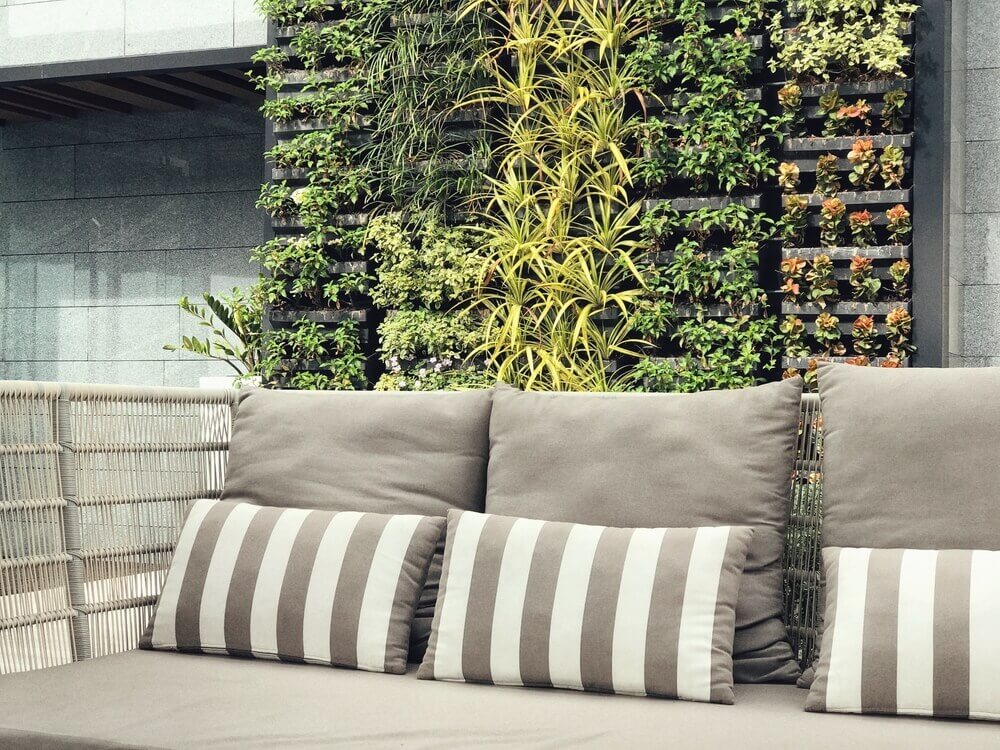
Beautiful Refreshing Outdoor Vertical Garden By Appleyayee/Shutterstock
The vertical wall can be one of the inner walls of the living room. Ensure you get enough light for flowering plants. However, if the wall is not exposed to lots of sunshine, you can plant indoor ones. Also, you can use plants that thrive in less sunshine and yet produce pleasing flowers of different hues. In your living room, you can use your cozy sitting arrangement right in front of the vertical garden. It adds beauty and absorbs toxins making your home healthy to live in.
{ 4 } Decide Your Watering Method
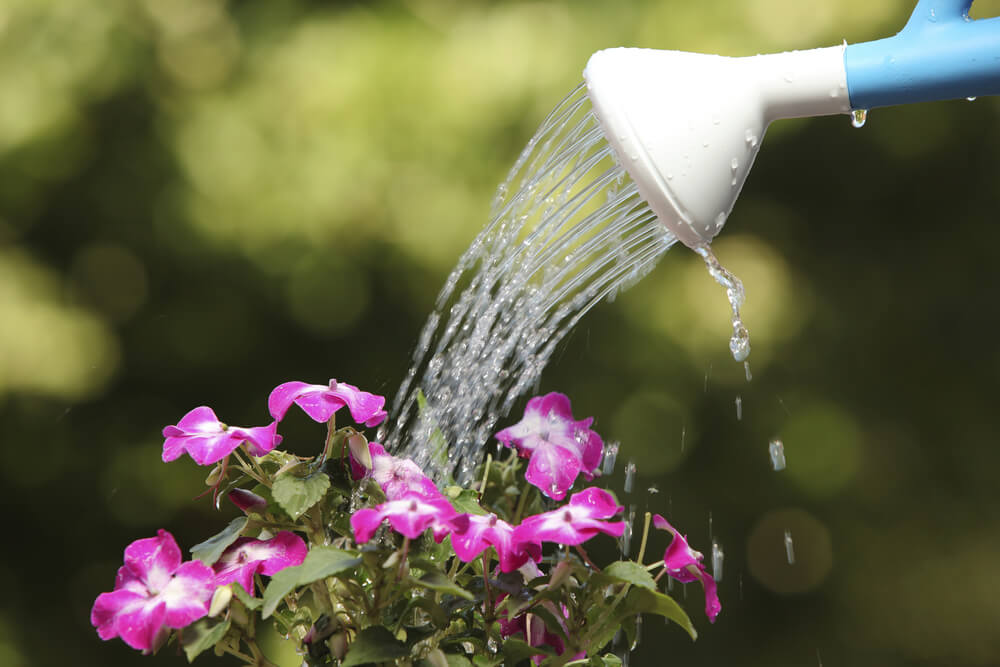
There are several watering methods to choose from. The most common method is using the watering can when it is poured from above. Water from sprinklers can also be used for watering the containers of plants from the rear side.
{ 5 } Choose Your Plants Carefully
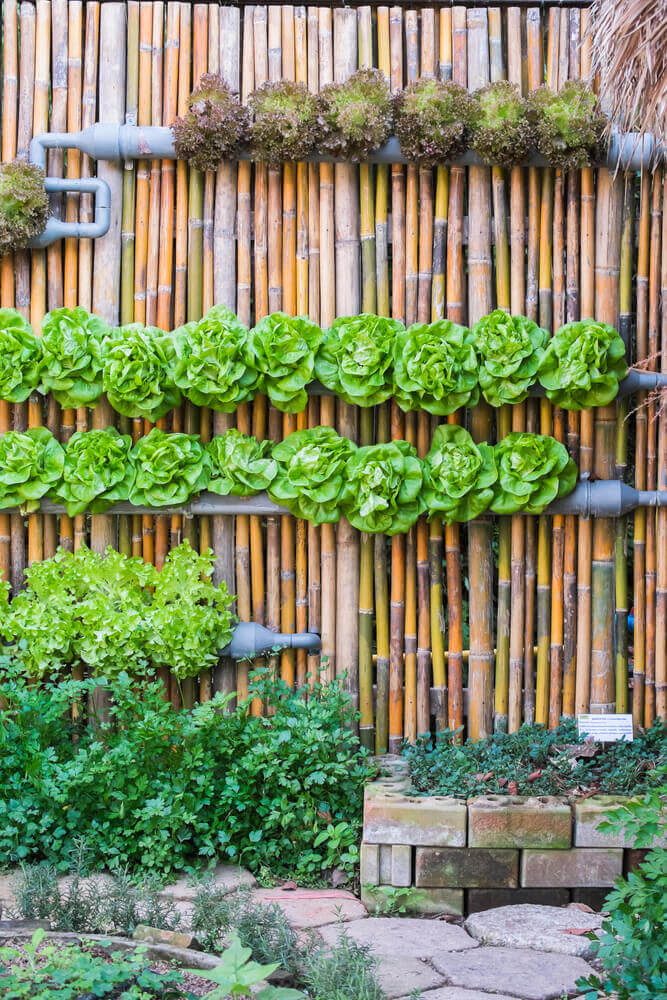
Vertical Hydroponics Garden on Bamboo Wall By Jajaladdawan/Shutterstock
Selecting the right plants for the vertical garden is extremely important. Plants are sensitive to the amount of sunlight, water and nutrient soil and fertilizer provided for growth. You can opt for growing leafy vegetables such as different varieties of Lettuce or flowering plants that require moderate sunlight. Always plant those species that require most sunlight on top of others.
{ 6 } Add Mulch or Fertilizer

The soil is often insufficient so adding “Mulch” or Fertilizer is essential to fortify the required nutrients. As a result, the plant grows healthy and well even in the minimum container for vertical gardening.
{ 7 } Water Regularly and Wisely

The new sapling requires special care and nurturing. As a vertical gardener, one should water the sapling regularly and wisely. Water the plants when the soil is partially dry. Overwatering causes damage and rotting of the roots causing death to the plant.
{ 8 } Add Stakes to Help Plants Grow Vertically
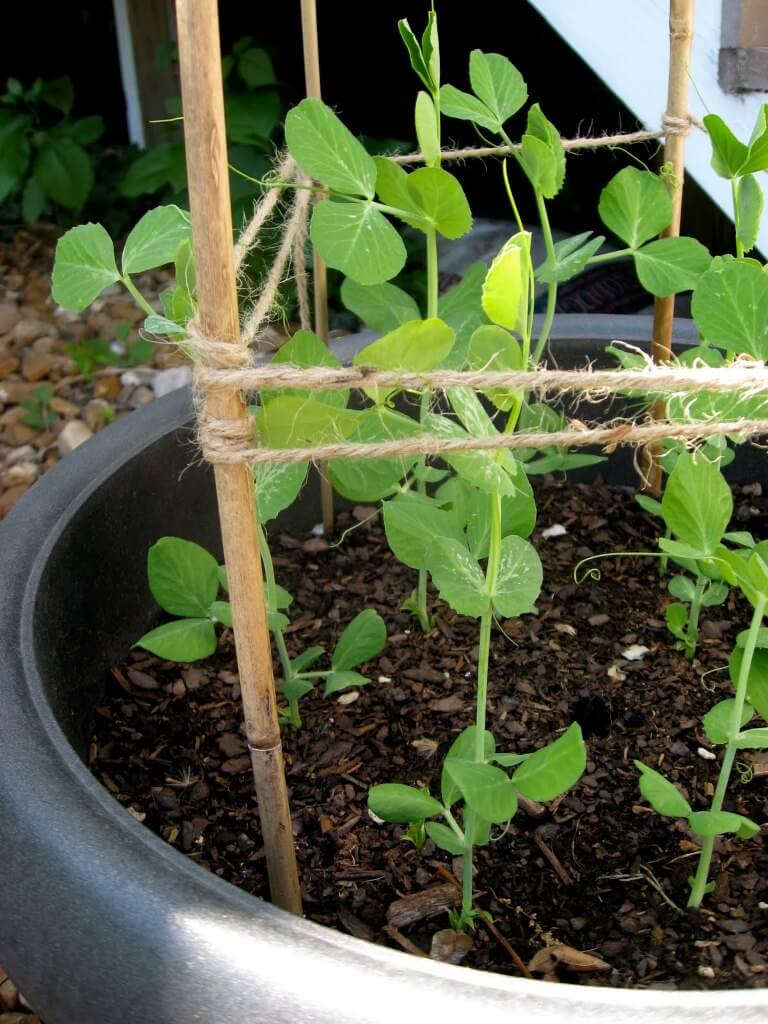
The main aim is to grow the sapling into a plant for vertical growth. It is advisable for Vertical gardeners to use stakes to make the plants grow vertically. Place four stakes at four corners inside the pot of the plant. Use twine and tie the four-cornered stakes. Ensure the plants are growing towards the tied stakes.
{ 9 } Place Plants Requiring Less Water on Top
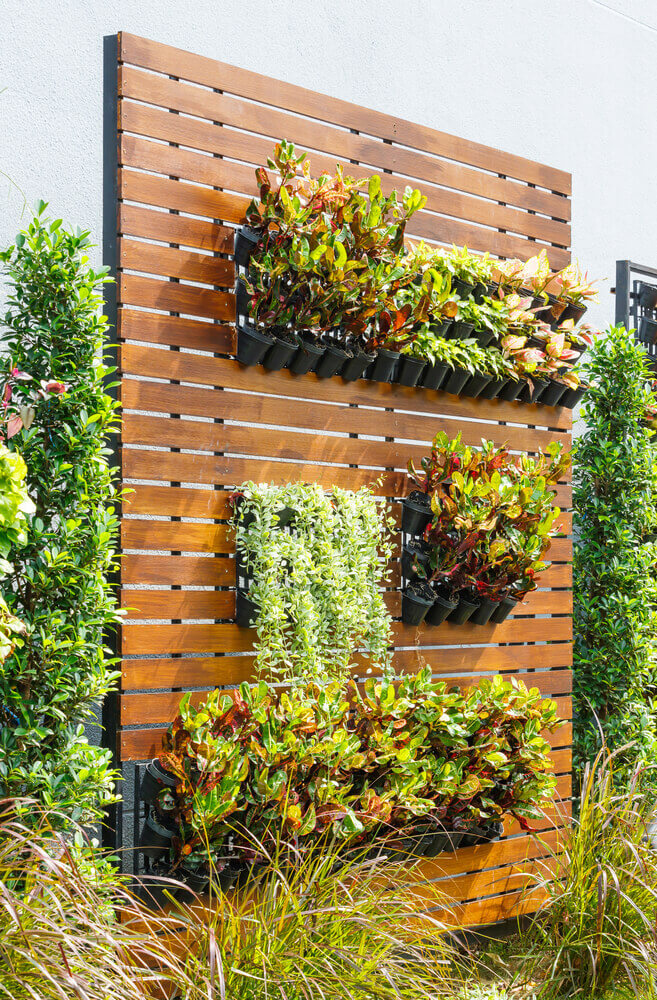
Beautiful Plants In Vertical Garden By 7th Son Studio/Shutterstock
After the plants have become healthy and steady, you can start decorating the vertical garden. You can hang the plant plastic pots on the vertical wooden or plastic frame. Ensure you place plants requiring less water on top. This is because those plants would not require watering every day.
{ 10 } Get Creative With Your Planters

Creative Plastic Bottle Planters For Vertical Garden By Jeerayut Rianwed/Shutterstock
You can get several planters at a time and use each of them creatively. You can use each planter to plant two different plants or two similar plants. Then you can hang all them with a long thread to reach various heights. These would help in creating a new special design. Alternatively, you can use different objects like used plastic bottles, tin cans, wood crates, etc. creatively as planters too. Simply buying colorful planters or doing some DIY painting on your simple planters can also make them look attractive and appealing.
